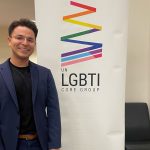“My husband won’t let me leave the house. He’s had flu-like symptoms and blames keeping me here [at home] on not wanting to infect others . . . But I feel like it’s just an attempt to isolate me.” This excerpt, drawn from a call to the National Domestic Violence Hotline reported recently in Time, highlights how the pandemic may exacerbate intimate partner violence (IPV), with abusive partners taking advantage of restrictions to strengthen coercive control over their partner’s activities.
IPV includes forms of psychological, sexual, economic and physical abuse against a current or former partner. It represents a persistent, worldwide threat to our interpersonal and intergenerational flourishing. The COVID-19 pandemic has served to highlight the magnitude of this significant affront to human dignity and motivates questions about what we should have been doing already as well as how we can make sustained, positive structural and social change to better support families.
Our vision includes pandemic emergency response, but must extend beyond it.
Across our research projects, which are conducted with both university and community partners and focus largely on IPV and its intergenerational consequences, we have thus far noted wide-ranging and diverse impacts of the pandemic on families. Although more research will be required to understand the nature of IPV in lockdown, previous research and emerging data can provide useful information about anticipated difficulties, our emergency response, and required long-term support for families.
Types of intimate partner violence
First, it is important to note that research on IPV in the US indicates the presence of substantial heterogeneity. A systematic review by Cavanaugh and Gelles (2005), for example, highlights several types of IPV in families, including situational couple violence, which is often mutual, typically less severe, and often driven by situational stressors, such as a job loss. In contrast, more severe types of IPV, sometimes referred to as intimate terrorism, are typically characterized by more severe violence, unilateral rather than mutual abuse, and higher levels of coercive control. Such patterns of IPV are often accompanied by perpetrator psychopathology and are generally viewed as more intransigent to intervention.
To date, data on the rise of IPV associated with the pandemic have primarily emerged from domestic violence hotline and police calls, suggesting that incidents of intimate terrorism, in particular, may be increasing. Other sources suggest declining calls or no change in other areas. Unfortunately, in the absence of interview and survey data, it’s difficult to know what to make of these conflicting reports, especially given other complexities. For example, we are not certain of how the pandemic may additionally influence the extent to which violent partners monitor and track the use of their partner’s communications technology (e.g. phone calls, social media), thus controlling or preventing their access to needed emergency support services. Several troubling risk factors for IPV are significantly elevated due to the pandemic, however, including rises in unemployment, family illness, lack of childcare, financial strain, rising alcohol and gun sales, and sheer availability of opportunity as families spend more time together at home due to loss of employment as well as shelter-in-place orders.
The pandemic’s impact
It will be some time before we understand the impact of the pandemic on the rates and nature of IPV, but it is critical to remember that families will have heterogeneous experiences of IPV. For some families, the lockdown may have promoted an exacerbation of extreme violence while other families, affected by precipitously high and unprecedented levels of familial stress, may be struggling with IPV for the first time. Understanding this diversity of outcomes will be meaningful for practice and policy—not all families will require the same type and level of support, because not all families will have equivalent risk or the same support needs.
Other intersecting risks, such as poverty, may also exacerbate the adverse effects of IPV in lockdown. Not only is poverty associated with higher risk for homelessness and housing instability, but IPV substantially adds to this risk. The United States faces a serious housing crisis –with shelters overflowing and a critical lack of affordable housing. When considering our response to IPV during the pandemic, it is therefore crucial to understand that when homes become unsafe, many families have nowhere to go.
When our systems are structured such that families have nowhere to go, the failure to protect represents a collective failing in our responsibility to families.
In this way, the COVID-19 pandemic brings to the forefront a longstanding structural problem, which calls for rapid resolution—the lack of safe housing alternatives for families experiencing IPV. This is especially critical given that non-perpetrating partners can be charged with “failure to protect” children in the household from witnessing IPV. Indeed, witnessing IPV is associated with numerous negative effects on the health and wellbeing of children. Yet when our systems are structured in such a way that families have nowhere to go, the failure to protect represents a collective failing in our responsibility to families.
Failing to recognize the role of our broader social systems in their complicity with the perpetration and maintenance of IPV is a significant problem— and one that reaches far beyond lack of affordable housing. What also emerges in the research literature are significant biases and challenges emerging when IPV-exposed women interact with “helping systems.” Although many social services provide incredible and inspirational support to survivors, a recent analysis led by Katie Scrafford on perceptions of women’s parenting in the context of IPV indicated that some service providers may hold relatively bleak views of women’s ability to be “good” parents in the context of IPV. Other research has found that women may encounter other psychological barriers in access to services, including an implicit tolerance of IPV, perceived reluctance or fear on the part of service provider to ask about IPV, and an undue focus on physical over emotional harm. All of these factors impede the accessibility, quality, and effectiveness of services for families.
What also emerges from their accounts is a powerful picture of maternal resilience and grace.
We have learned a great deal from our interviews with women, who of course recognize—and are deeply pained by—the significant adverse effects of IPV on themselves and their children. Yet what also emerges from their accounts is a powerful picture of maternal resilience and grace, working to foster positive relationships with their children under the most difficult conditions. An essential part of supporting survivors of IPV is not only addressing harm, but also recognizing and lifting up the ways in which they actively work to uphold the dignity of themselves and their families.
Toward action
So how might we respond, especially in the midst of great uncertainty about what exactly is happening in families? As a starting place for action on this and other social issues highlighted by the pandemic, we might consider how our personal capacities align with a strategic peacebuilding approach. Where are we situated, how are we positioned to act? How can we coordinate our actions with those of others? How can we motivate transformational change, and in what areas? What can everyone do? What is our vision, our hope for families?
Our vision includes pandemic emergency response, but must extend beyond it. Drawing from lessons in peace studies, we aspire for more than the absence of violence in the home. We hope, rather, for families to flourish, for their relationships to be fruitful, and for intergenerational legacies of right-relationship and health. To realize this bold vision grounded in our insistence on respect for innate human dignity, we must recognize our collective responsibility for making available the resources and opportunities for families to pursue it.
Laura Miller-Graff is associate professor of psychology and peace studies at the Keough School of Global Affairs. She is a core faculty member of the Kroc Institute for International Peace Studies, part of the Keough School.
This article is part of a series of blog posts published by the Keough School of Global Affairs. Dignity and Development provides in-depth analysis of global challenges through the lens of integral human development.



